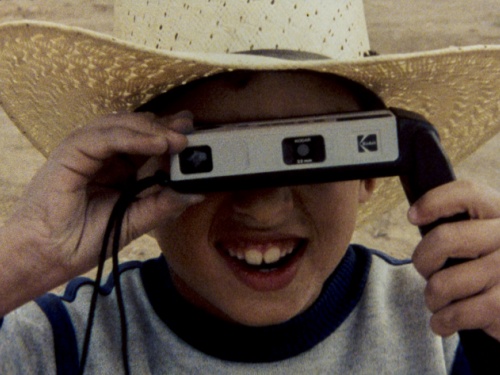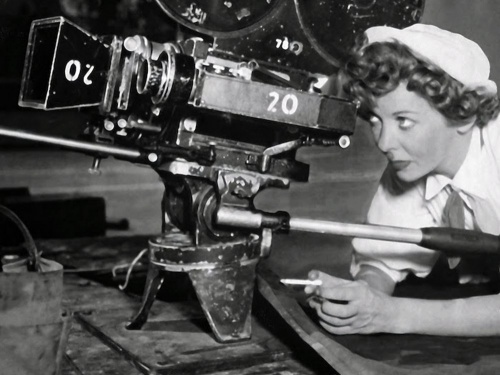Chantal Akerman's Toute Une Nuit - To Cleave and Uncleave
Adam Roberts from A Nos Amours introduces Toute une Nuit ahead of a screening on Thursday 10 April at 8pm, the next film in their retrospective of the work of Chantal Akerman.
Chantal Akerman's film Toute une nuit surprised me. I had seen it last in a scruffy cinema in Amsterdam. It did not stick. The images faded fast; little remained almost three decades later. It was like a patched fresco beyond repair.
Then, in order to check the condition of a film print prior to a run at the ICA cinema in London, part of the A Nos Amours retrospective running until 2015 (a slow retrospective!), I sat and discovered one of the most ravishing films I have ever seen.
What is Toute une nuit? It is a series of scenes, brief encounters, chance meetings and lovers' tiffs spread across a summers' night in Brussels. There are around 70 people, 50 scenes and not much narrative connection between them all. What they do have in common is the wonderfully inventive, witty, compassionate intelligence of the instigator of the scenes - Chantal Akerman. I kept thinking of Ezra Pound's definition of great literature: it is news that stays news. Toute une nuit, made in 1982, is news, great news.
To look at the film in more detail. Here are a series of people, some alone, some not. If they come together, they often come together suddenly, violently, ardently. They cleave as if for the last time. They throw arms around each other and seem unlikely ever to let go. Or else they sit, immobile, unable to make the first move. Glances are surreptitious, and timed to a perfection of disconnection. If they dance (and how wonderfully they dance!), they dance as if for the last time, clasped one to the other, swaying in a passionate swoon. Partings can be violent, with exits down reverberant staircases making for a cacophony that dramatically embodies the break.
The sound world is a wonderful tapestry, woven from those sharp sounds of heels on stair and paving (no films has ever made such use of the percussive potential of women's heels!), the sound of heavy doors slammed hard, latches that resist ingress, calculating machines making a good imitation of gun fire, or even the sedative music of light rain on glass and distant thunder. When there is music, it is more than likely to be a cheesy Italian pop song blaring from a duke box in a down at heel bar, where the last two drinkers are busy ignoring each other.
This nocturnal realm is a world of changes in pace and rhythm, where action is choreographed for it's utility in a structure: if there has been an Andante passage, then Allegro vivace is called for. If there has been complex choreographed movement in a complex interior space, then we might be offered next the contrast of a serene passage through open space. Murmured voices may repeat and iterate phrases, because the moment is inexplicably charged, as when parting or straining at cross purposes. Repetition is a formal device, but one that here carries emotional charge too.
Akerman is known for durational strategies: real time observation of real time processes. Toute un nuit does not much do that. Instead we have a set of shorter elements, arranged by proportion - a series composed of varied textures, weights and feelings. A theme and variations perhaps. Akerman and her editor find a pulse and stick to it, like good jazz. This is not about sturm und drang, of building up tension and releasing it, of developing anxiety then resolving it, it is about harnessing a very human love of pattern recognition, of activating a detective's instinct, of requiring of us that we take delight in a weave much like that of an Afghan rug, where the pattern is clear, yet the execution leaves room for surprise and unpredictable change. If we could count better and hold design in mind better, we would see better how the architect/composer had put it all together. As it is, and film being what it is, we are in it for a while, dependent on memory to provide perspective and over-view. We are just not very good at that. If we are lazy, we will prefer the simplicity of an easily summarised plot outline, a clear narrative. Toute une nuit is a rich feast, not suitable for the impatient diner. It demands care and attention to fully digest. Repeat viewings are perhaps desirable.
I wonder about precedents for what seems to me a wholly original work. I think of Max Ophüls' La Ronde, where perhaps the most interesting connection with Toute une nuit is not that both films offer a series of scenes with no one protagonist, but the fact that Ophüls and Akerman both are concerned with the physical presence of actors, constrained by physical tasks and time, rather than what the camera and editing can do. I am reminded too of Astaire and Rogers strolling in Central Park, only to fall into step and dance in The Band Wagon.
And finally, what of cleaving and uncleaving? These are wonderfully ambiguous terms. To cleave means to both part and at the same time to join. Watching Akerman's protagonists cleaving unto one another, is to see that they are only too aware that only time will tell, that nothing is for ever, that the moment is always tinged with tragedy because it will pass. Just as a pair of lovers seem absolutely joined and lost in a poetic flight of utter, blissful union, a phone rings, day breaks and the sound track fades. Traffic noise intrudes loudly. Morning has broken. Cleaving makes way for uncleaving. And vice versa.
Adam Roberts
A Nos Amours
Toute une nuit, written and directed by Chantal Akerman, screens on Thursday 10th April at 8pm.
This article originally appeared on the Huffington Post.
This article is posted in: Articles, Film
Tagged with: Adam Roberts, Chantal Akerman, A Nos Amours, Toute une Nuit





